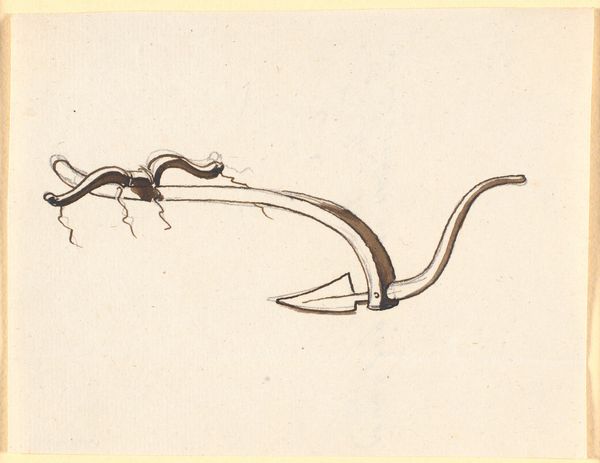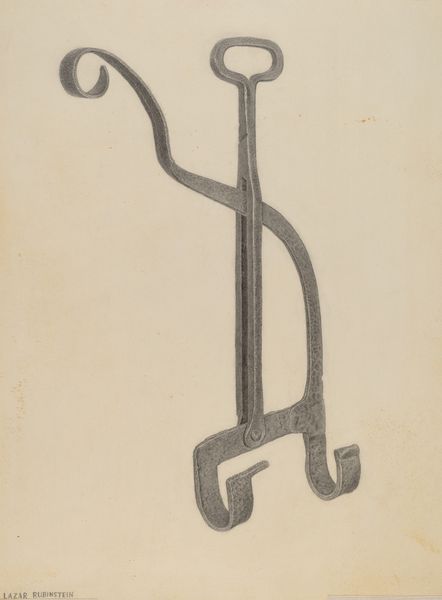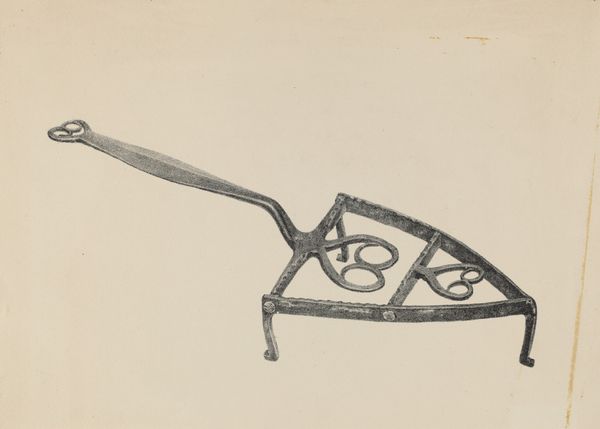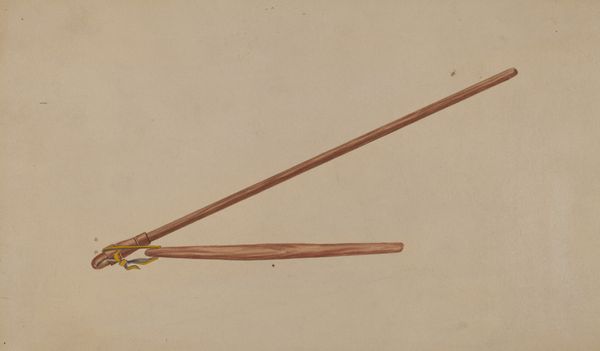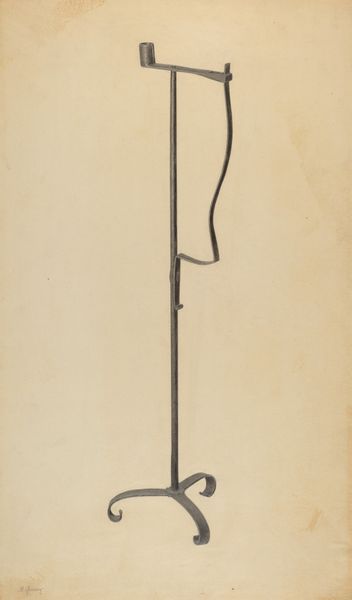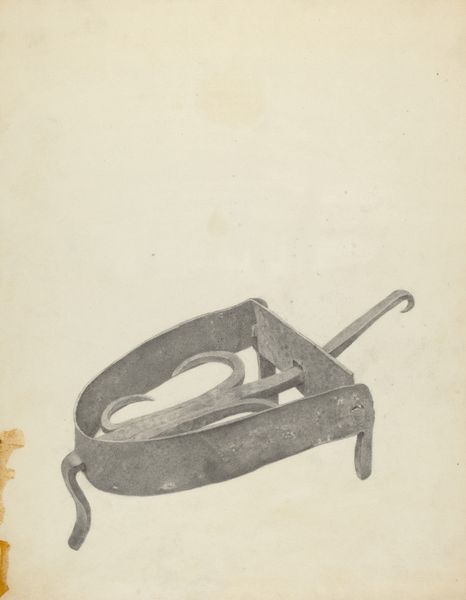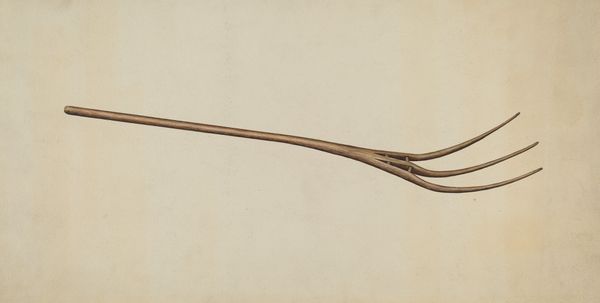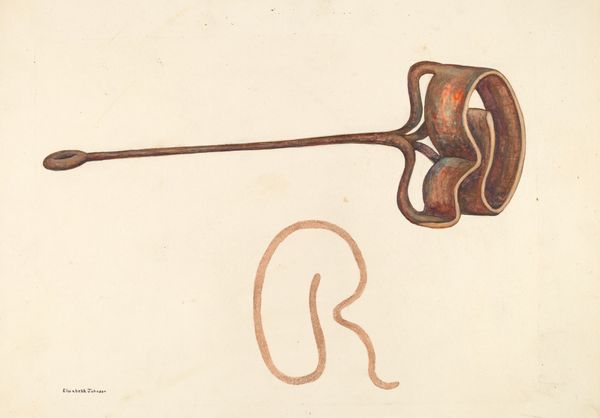
drawing, pencil, graphite
#
pencil drawn
#
drawing
#
pencil drawing
#
geometric
#
pencil
#
graphite
#
realism
Dimensions: overall: 22.5 x 34.2 cm (8 7/8 x 13 7/16 in.)
Copyright: National Gallery of Art: CC0 1.0
Curator: The artwork we're observing is a pencil drawing called "Miner's Candlestick" by Benjamin Resnick, created around 1939. Editor: There's an incredible stillness about it. It feels like I'm looking at an object frozen in time, presented almost clinically with the delicate graphite rendering. Curator: Exactly. Resnick's attention to detail and the medium itself emphasize the physical qualities of the object. It's about the graphite, the paper, the mark-making itself reflecting industrial modes of precise making and depiction. Think of the labor conditions and social context embedded within this object. Editor: Right, and I'm immediately struck by what the candlestick represents: the brutal and often unseen labor within mining communities. The light it provides is not just physical; it hints at larger issues of worker exploitation and class disparity prevalent in the 1930s. Consider, too, what kind of light this object provides compared to, say, electricity. Curator: That’s insightful. It invites us to consider the technology inherent to resource extraction and the candlestick’s role in facilitating that. What materials went into it? What methods forged the components, and under what labor conditions? How has its function impacted natural resources? Editor: I see it also symbolizing the perilous circumstances endured by miners—that flickering flame against the crushing darkness becomes a poignant metaphor for resilience, also linking this work to depictions of work in the American canon from this era, but without depicting the laborers. Curator: Yes, it connects material realities with symbolic significance. This isn’t just an image of a tool, it's about industrial production and a window onto social and economic structures. It is a representation of the systems behind labor, rather than valorizing individual strength or sacrifice, which is an interesting difference. Editor: Absolutely. Looking at Resnick's candlestick gives insight into working conditions through an individual experience and historical framework of labor that are inseparable. It offers up so much beyond a simple light source. Curator: For me, Resnick's focus on an isolated, material object asks us to reconsider art's relationship with manufacture, and perhaps, how we determine value itself.
Comments
No comments
Be the first to comment and join the conversation on the ultimate creative platform.
